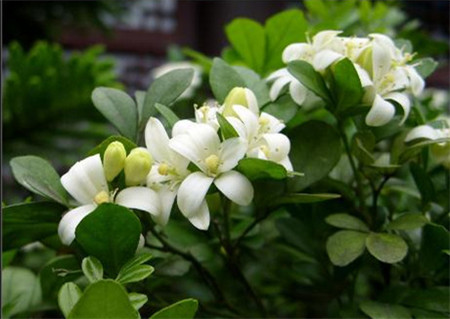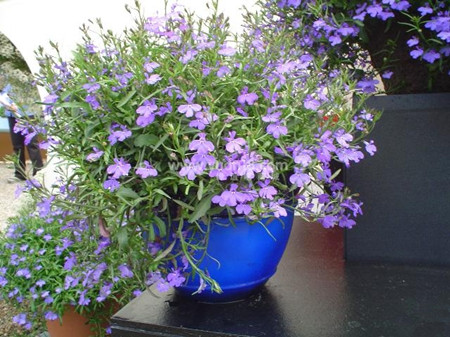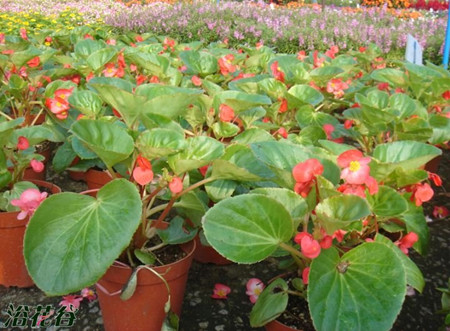The Cuttage method of Corydalis chinensis
The propagation methods of night incense mainly include cutting propagation, striping propagation, ramet propagation and seed breeding, and the most commonly used method is cutting propagation. Cuttage propagation can be carried out except in winter, and in a warm and humid climate, it is best to cultivate it in sandy loam soil in fertile soil, because nocturnal incense has strong life. New branches will gradually grow into new seedlings.
The cutting steps of evening primrose are as follows:
⒈ choose the insert. The branches with strong growth or free of diseases and insect pests should be selected, and the sunny branches in the middle and upper part of the year should be selected on the same plant, requiring short internodes, strong branches and leaves, full bud tips, and unsuitable branches and overgrown branches that are about to blossom.
The matrix was selected for ⒉. Peat soil, rotten leaf soil and Gaza were prepared according to 3 ∶ 3 ∶ 4 respectively. The bed soil prepared in this way has the characteristics of increasing bed temperature, water retention, aeration, fertility and partial acidity, and is suitable for branches to take root and sprout.
⒊ handles inserts. The cuttings were treated with abt rooting powder before cutting, which had the effect of promoting rooting. Cut the cuttings into 8cm to 12cm segments with 2 to 3 buds above. The cutting □ at the lower part of the cuttings should be 0.5cm below the node, and the □ should be smooth, cutting off the lower leaves, leaving only 2 to 3 leaves at the top, with a depth of about 3cm.

The conditions for ⒋ to take root. The suitable rooting temperature is 20 degrees Celsius to 24 degrees Celsius, and the soil temperature is 3 degrees Celsius to 5 degrees Celsius higher than the temperature. The relative humidity of the bed air is 80% to 90%, which is favorable for rooting and requires light of about 30%. The moisture should be suitable, which is slightly higher at the initial stage of cutting and slightly dry at the later stage. The suitable period for local open-field cutting is from early May to mid-June, which is in a better climate, which can better meet the temperature and humidity conditions needed for cuttings to take root.
⒌ strengthens the management after insertion. After planting, it should be watered thoroughly, covered with plastic film, placed in a shaded place, or scattered grass on the film to prevent direct sunlight, and increase light at night to help the cuttings survive. Air is released once or twice a day to replenish the oxygen needed and prevent diseases. To often spray water, keep the inserting bed moderately moist, but do not spray too much water, otherwise the inserting bed is too wet, often affecting the cuttings healing and rooting. When the new root grows to 2 cm to 3 cm, it can be transplanted into the basin at the right time. Nanjing area should be moved into indoor maintenance in winter after flowering.
The culture method of night incense the latest detailed explanation of indoor night incense culture method
Introduction: night incense, flowers, such as its name, have a clear fragrance, especially at night, is more fragrant to the nostrils. It is a rattan shrub, branchlets weak, leaves opposite, broadly ovate, heart-shaped to rectangular round-ovate, umbrella-shaped Cymes axillary, with up to 30 flowers; Corolla lobes 5, rectangular round, yellowish green. Next, let's learn about the breeding method of nocturnal incense in the room. Like warm, moist, sunny, well-ventilated, loose and fertile soil, drought-resistant, barren, not waterlogging, not cold-resistant, so, planting night incense requires well-ventilated environmental conditions, early May to the end of September should be adequate sunshine in the hospital or balcony maintenance, although it likes adequate sunshine, but in summer noon should avoid hot sun exposure. Summer is the peak growing season, except for sufficient fertilizer, the basin soil must be kept moist and watered twice a day if necessary. If it is a seedling, it should be sprayed to the leaves once or twice a day. It should be moved into the greenhouse in the middle and last ten days of October every year, and the temperature of the greenhouse should be kept from 8 ℃ to 12 ℃. If the temperature is lower than 5 ℃, the leaves will wither and fall off until death. This veritable nocturnal incense smells sweet and mysterious, because it opens at midnight and few people can see her in full bloom. Put night incense and other plants in the bedroom that can send out fragrance, which can create a quiet and comfortable atmosphere for the bedroom and let people fall asleep peacefully in the natural fragrance. Everything has two sides, there are good and bad, if not used properly, it will lead to bad consequences. Although nocturnal incense gives off its fragrance at night, it makes people go to sleep with the fragrance, but it is not applicable to everyone. It is not suitable to plant evening flowers in the rooms of patients with high blood pressure and heart disease.
The culture method of night incense
Night incense, also known as night fragrance, night orchid, night clove, clove, jasmine and so on. Evergreen rattan shrubs of the Solanaceae. It is native to South America and South China.
1. Morphological characteristics leaves opposite, long ovoid, base cordate. The twigs are green and the old stems are gray-white. The flowers are small and gather in the axils of new branches and leaves, and each inflorescence has 4 or 5 yellow-green high-legged dish-shaped Corolla. It blossoms at night and has a strong aroma. Night incense got its name.
2-growth habits like a sunny and well-ventilated environment. Not cold-resistant, afraid of frost, should be loose, breathable, well-drained fertile sandy loam.
3. Propagation and cultivation can be done by sowing, cuttage, striping and other propagation methods. Cuttage propagation is commonly used. Soft wood cuttings can be carried out in spring and autumn. Cuttings should choose semi-lignified and sturdy branches with a length of 10 to 15 coffee, peel off the basal leaves, leave the upper two leaves, cut off the first part of the leaves and insert them densely in the sand bed (basin) or deaf bran ash, and pour them with water, cover them with a shading net of 5 cm ~ 70 "every day except morning and evening, and do a good job of foliar spraying at any time. Pay attention to the media not to be too wet. Otherwise, it is easy to cause the stem in the matrix to rot to death. It can take root after 15-20 days. Evening incense can also be inserted with water, as long as pay attention to a certain amount of light and clean water quality, it is also easy to take root and survive.
Nocturnal incense is generally used as a potted plant, and the cultivation soil can be cultivated by adding an appropriate amount of peat soil and about 1 cm of mature organic fertilizer. The maintenance and management after planting is relatively extensive, as long as it is watered in time, a thick organic liquid fertilizer or some cake fertilizer is applied in early spring, and some liquid fertilizer is often applied during the growing period. As evening incense grows vigorously and is easy to sprout and grow branches from the rhizosphere, it should be pruned with the combination of renewal and shaping after each flowering, and all redundant and dead branches should be cut off at the same time to produce new branches to facilitate vigorous growth and large flowering. It is appropriate to keep above rc in winter, and the basin soil should not be watered too much.
The prevention and control of diseases and insect pests is rare. If it occurs, the diseased leaves or branches can be cut off as soon as possible to make them ventilated and transparent. Pests can be killed manually.
For horticultural use, nocturnal incense is often used as a family potted flower decoration. Its strong aroma also has a certain mosquito repellent effect.
Evening incense flowers are also edible and are often used to make tea or as seasoning for dishes. Flower and root medicine has the effect of calming the liver and eyesight.
- Prev

Herbal flowers suitable for autumn sowing
Most of the true flower friends like to sow their own seeds. When the hand-cultivated flowers are given to relatives and friends, the bottom of my heart is a kind of pride. Among the annual flowers and perennial herbs in herbaceous flowers, many adopt autumn sowing method to cultivate flower seedlings.
- Next

Cutting methods of four Seasons Begonia
Four seasons crabapple leaves delicate and bright, flowers in clusters, bright color, four seasons open, is an excellent family potted flowers. The cuttings of four seasons crabapple do not need to be too long. It is recommended that the cuttings should be less than 10 centimeters. Too long cuttings will lead to difficulties in water transmission, branch support and decay.
Related
- Fuxing push coffee new agricultural production and marketing class: lack of small-scale processing plants
- Jujube rice field leisure farm deep ploughing Yilan for five years to create a space for organic food and play
- Nongyu Farm-A trial of organic papaya for brave women with advanced technology
- Four points for attention in the prevention and control of diseases and insect pests of edible fungi
- How to add nutrient solution to Edible Fungi
- Is there any good way to control edible fungus mites?
- Open Inoculation Technology of Edible Fungi
- Is there any clever way to use fertilizer for edible fungus in winter?
- What agents are used to kill the pathogens of edible fungi in the mushroom shed?
- Rapid drying of Edible Fungi

